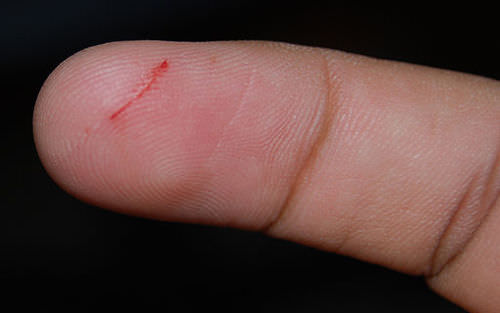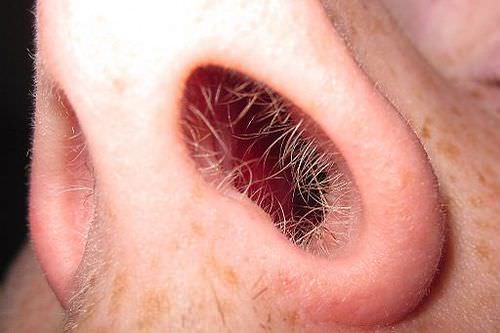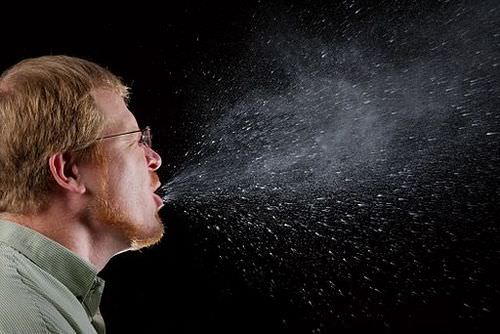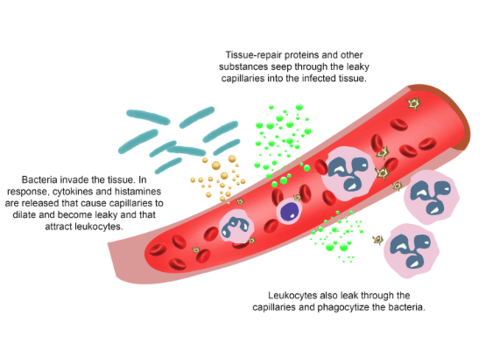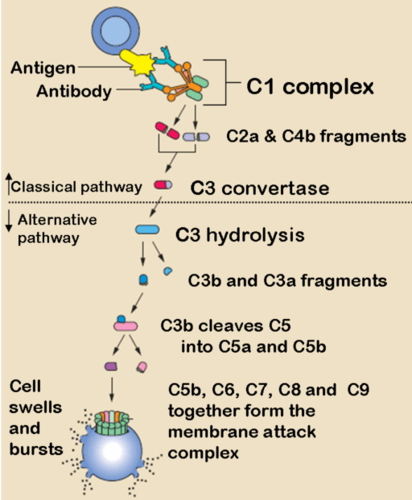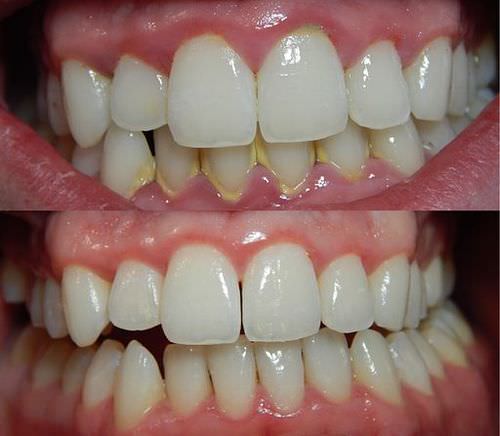19.4 原免疫系统
章节大纲
-
Paper Cut
::剪切纸张It’s just a paper cut, but the break in your skin could provide an easy way for to enter your body. If were to enter through the cut and infect the wound, your innate immune system would quickly respond with a dizzying array of general defenses.
::只是切纸,但皮肤的断裂可以为进入你的身体提供一种容易的方式。 如果通过切口进入伤口并感染伤口,那么你的内生免疫系统将很快以一连串令人晕眩的一般防御系统作出反应。What Is the Innate Immune System?
::什么是原生免疫系统?The innate immune system is a subset of the human immune system that produces rapid, but non-specific responses to pathogens. Innate responses are generic, rather than tailored to a particular pathogen. The innate system responds in the same general way to every pathogen it encounters . Although the innate immune system provides immediate and rapid defenses against pathogens, it does not confer long-lasting to them. In most organisms , the innate immune system is the dominant system of host defense. Other than most vertebrates (including humans), the innate immune system is the only system of host defense.
::内生免疫系统是人类免疫系统的一个子集,对病原体作出迅速但非特定的反应。原生反应是通用的,而不是针对特定病原体。内生反应系统对它遇到的每一种病原体都作出同样的一般反应。虽然内生免疫系统能对病原体提供即时和迅速的防御,但不能给予它们长期的防护。在大多数生物体中,内生免疫系统是主宿体防御系统。除了大多数脊椎动物(包括人类)外,内生免疫系统是唯一的主宿体防御系统。In humans, the innate immune system includes surface barriers, inflammation, the complement system, and a variety of cellular responses. Surface barriers of various types generally keep most pathogens out of the body. If these barriers fail, then other innate defenses are triggered. The triggering event is usually the identification of pathogens by pattern-recognition receptors on of the innate immune system. These receptors recognize molecules that are broadly shared by pathogens, but distinguishable from host molecules. Alternatively, the other innate defenses may be triggered when damaged, injured, or stressed cells send out alarm signals, many of which are recognized by the same receptors as those that recognize pathogens.
::在人类中,内生免疫系统包括表面屏障、炎症、补充系统以及各种细胞反应。各种类型的表面屏障通常使大多数病原体远离身体。如果这些屏障失灵,则触发其他内生防御。触发事件通常是通过内生免疫系统的模式识别受体来识别病原体。这些受体识别的分子广泛为病原体所共享,但可与宿主分子区别开来。或者,其他的内生防御可能在受损、受伤或压力细胞发出警报信号时触发,其中许多信号与识别病原体的受体相同。Barriers to Pathogens
::对病原体的障碍The body’s first line of defense consists of three different types of barriers that keep most pathogens out of body tissues . The types of barriers are mechanical, chemical, and biological barriers .
::人体的第一道防线由三种不同类型的屏障组成,这些屏障使大多数病原体无法进入人体组织。 屏障的类型是机械、化学和生物屏障。Mechanical Barriers
::机械障碍Mechanical barriers are the first line of defense against pathogens, and they physically block pathogens from entering the body. The skin is the most important mechanical barrier. In fact, it is the single most important defense the body has. The outer layer of skin — the epidermis — is tough, and very difficult for pathogens to penetrate. It consists of dead cells that are constantly shed from the body surface, a process that helps remove bacteria and other infectious agents that have adhered to the skin. The epidermis also lacks and is usually lacking moisture, so it does not provide a suitable environment for most pathogens. Hair — which is an accessory organ of the skin — also helps keep out pathogens. Hairs inside the nose may trap larger pathogens and other particles in the air before they can enter the airways of the (see photo ).
::机械屏障是防止病原体的第一道防线,它们从物理上阻止病原体进入人体,皮肤是最重要的机械屏障,事实上,皮肤是身体最重要的防线。皮肤外层——皮皮层——是坚硬的,病原体很难穿透,由不断从身体表面脱落的死细胞组成,这一过程有助于清除坚持皮肤的细菌和其他传染性物质。皮层也缺乏并且通常缺乏水分,因此它不能为大多数病原体提供合适的环境。毛尔是皮肤的辅助器官,它也有助于保持病原体。鼻部的毛毛可能在进入空气中捕捉更大的病原体和其他微粒(见照片 ) 。Nasal hairs are a mechanical barrier to larger particles in the air.
::鼻毛是空气中较大颗粒的机械屏障。Mucous membranes provide a mechanical barrier to pathogens and other particles at body openings. These membranes also line the respiratory, gastrointestinal, urinary, and reproductive tracts. Mucous membranes secrete mucus , which is a slimy and somewhat sticky substance that traps pathogens. Many mucous membranes also have hair-like cilia that sweep mucus and trapped pathogens toward body openings, where they can be removed from the body. When you sneeze or cough, mucus and pathogens are mechanically ejected from the nose and throat, as you can see in the photo . Other mechanical defenses include tears — which wash pathogens from the — and urine , which flushes pathogens out of the urinary tract.
::肌肉膜为人体开口的病原体和其他微粒提供了机械屏障,这些膜还沿着呼吸道、胃肠、小便道和生殖道穿行。肌肉膜是粘粘粘粘粘的粘粘性粘性物质,可以捕捉病原体。许多肌肉膜也有发型相似的粘粘性粘性,可以将粘结的粘结性粘结性粘液扫到身体开口,可以将病原体从身体上移走。当你打喷嚏或咳嗽时,肌肉和病原体被机械地从鼻子和喉部射出,正如你从照片中可以看到的那样。其他机械防护手段包括眼泪——可以清洗病原体——和尿液,可以把病原体冲出尿道。A sneeze can expel many pathogens from the respiratory tract, which is why you should always cover your mouth and nose and when you sneeze.
::喷嚏可以将许多病原体从呼吸道中排出,这就是为什么你总是要遮住嘴和鼻子,而且打喷嚏的时候。Chemical Barriers
::化学壁垒Chemical barriers also protect against infection by pathogens. They destroy pathogens on the outer body surface, at body openings, and on inner body linings. Sweat, mucus, tears, saliva , and breastmilk all contain antimicrobial substances (such as the lysozyme) that kill pathogens, especially bacteria. Sebaceous glands in the dermis of the skin secrete acids that form a very fine, slightly acidic film on the surface of the skin. This film acts as a barrier to bacteria, , and other potential contaminants that might penetrate the skin. Urine and vaginal secretions are also too acidic for many pathogens to endure. Semen contains zinc — which most pathogens cannot tolerate — as well as defensins, which are antimicrobial that act mainly by disrupting bacterial . In the stomach , stomach acid and digestive enzymes called proteases (which break down proteins) kill most of the pathogens that enter the gastrointestinal tract in food or .
::化学屏障也防止了病原体的感染。它们摧毁了外体表面、身体开口和内部的病原体。鼻涕、黏液、眼泪、唾液和母乳都含有杀病原体、特别是细菌的抗微生物物质(如淋巴菌)。皮肤秘密酸皮质的皮层中含沙质的腺,在皮肤表面形成一种非常细微的酸薄膜。这个胶片作为细菌、可能渗入皮肤的其他潜在污染物的屏障。尿道和阴道的分泌也太酸,许多病原体无法忍受。精液和阴道的分泌物都含有锌,大多数病原体无法忍受,还有防微生物,主要通过破坏细菌作用。在胃部、胃酸和消化酶中,被称为蛋白质的胃、胃酸和消化酶,杀死了进入食物或肠道的胃肠道的大部分病原体的病原体。Biological Barriers
::生物障碍Biological barriers are living organisms that help protect the body from pathogens. Trillions of harmless bacteria normally live on the human skin and in the urinary, reproductive, and gastrointestinal tracts. These bacteria use up food and surface space that help prevent pathogenic bacteria from colonizing the body. Some of these harmless bacteria also secrete substances that change the conditions of their environment, making it less hospitable to potentially harmful bacteria. T hey may release toxins or change the pH, for example. All of these effects of harmless bacteria reduce the chances that pathogenic microorganisms will be able to reach sufficient numbers and cause illness.
::生物屏障是有助于保护身体不受病原体伤害的生物体; 成百上千的无害细菌通常活在人体皮肤上以及尿道、生殖道和胃肠道中; 这些细菌利用食物和表面空间来防止病原体使身体殖民化; 其中一些无害细菌也隐藏改变其环境条件的物质,使其不适宜于可能有害的细菌; 它们可能释放毒素或改变pH值,例如,无害细菌的所有这些影响减少了病原微生物达到足够数量并造成疾病的可能性。Inflammation
::点火If pathogens manage to breach the barriers protecting the body, one of the first active responses of the innate immune system kicks in. This response is inflammation. The main function of inflammation is to establish a physical barrier against the spread of infection. It also eliminates the initial cause of cell injury, clears out dead cells and tissues damaged from the original insult and the inflammatory process, and initiates tissue repair. Inflammation is often a response to infection by pathogens, but there are other possible causes, including burns, frostbite, and exposure to toxins.
::如果病原体设法打破保护身体的屏障,这是先天免疫系统最先积极的反应之一。这种反应是发炎。发炎的主要作用是建立防止感染蔓延的物理屏障。它也消除了细胞伤害的最初原因,清除了最初侮辱和煽动过程所损伤的死亡细胞和组织,并开始组织修复。发炎往往是对病原体感染的一种反应,但还有其他可能的原因,包括烧伤、冻土和接触毒素。The signs and symptoms of inflammation include redness, swelling, warmth, pain, and frequently some loss of function. These symptoms are caused by increased flow into infected tissue, and a number of other processes, illustrated in the figure .
::发炎的迹象和症状包括红化、肿胀、温暖、疼痛和经常丧失功能。 这些症状是流入受感染组织的数量增加以及图中显示的其他一些过程造成的。This drawing shows what happens during the inflammatory response.
::这张图显示了煽动反应期间发生的情况。Inflammation is triggered by chemicals such as cytokines and histamines , which are released by injured or infected cells, or by immune system cells such as macrophages (described below) that are already present in tissues. These chemicals cause capillaries to dilate and become leaky, increasing blood flow to the infected area and allowing blood to enter the tissues. Pathogen-destroying leukocytes and tissue-repairing proteins migrate into tissue spaces from the bloodstream to attack pathogens and repair their damage. Cytokines also promote chemotaxis, which is to the site of infection by pathogen-destroying leukocytes. Some cytokines have anti-viral effects. They may shut down in host cells, which viruses need in order to survive and replicate.
::发炎是由以下化学品引发的:由受伤或受感染的细胞释放的细胞和甲胺等化学物质,或组织中已经存在的免疫系统细胞,如(下文叙述的)巨型细胞,这些化学物质导致毛状体膨胀和渗漏,增加血液流到受感染地区,允许血液进入组织;病原体分解的白血素和组织防腐蛋白从血液中迁移到组织空间,以攻击病原体并修复其损伤;细胞还促进血清税,这是病原体破碎的白血球感染地;一些细胞具有抗病毒效应;它们可能在宿主细胞中关闭,病毒需要这些细胞生存和复制。Complement System
::补充系统The complement system is a complex biochemical mechanism named for its ability to “complement” the killing of pathogens by antibodies , which are produced as part of an adaptive immune response . The complement system consists of more than two dozen proteins normally found in the blood and synthesized in the liver . The proteins usually circulate as non-functional precursor molecules until activated.
::补充系统是一种复杂的生化机制,其名称是,它能够“补充”抗体杀死病原体,而抗体是作为适应性免疫反应的一部分产生的,补充系统由通常在血液中发现并在肝脏中合成的20多个蛋白组成,蛋白质通常作为不起作用的前体分子循环,直到激活。As shown in the figure , when the first protein in the complement series is activated —typically by the binding of an antibody to an antigen on a pathogen — it sets in motion a domino effect. Each component takes its turn in a precise chain of steps known as the complement cascade. The end product is a cylinder that punctures a hole in the pathogen’s cell membrane. This allows fluids and molecules to flow in and out of the cell, which swells and bursts.
::如图所示,当补充序列中的第一个蛋白质被激活时——通常通过将抗体与病原体上的抗原结合而激活——它起动了多米诺效应,每个组成部分都按一个精确的阶梯轮转动,称为补充级联。最终产品是一个圆筒,穿透了病原细胞膜中的洞。这使得液体和分子能够流进和流出细胞,细胞会膨胀和喷发。The complement system is a cascade of proteins that complements the killing of pathogen cells by antibodies.
::补充系统是一系列蛋白质,补充抗体杀死病原体细胞。Cellular Responses
::细胞响应Cellular responses of the innate immune system involve a variety of different types of leukocytes. Many of these leukocytes circulate in the blood and act like independent, single-celled organisms, searching out and destroying pathogens in the human host. These and other immune cells of the innate system identify pathogens or debris, and then help to eliminate them in some way. One way is by phagocytosis .
::内生免疫系统的细胞反应涉及不同种类的白鲸,许多这种白鲸在血液中循环,表现为独立、单细胞生物,在人体宿主中寻找和销毁病原体,这些以及内生系统的其他免疫细胞识别病原体或残块,然后以某种方式帮助消除它们,其中一个方法是通过发细胞病。Phagocytosis
::发光细胞Phagocytosis is an important feature of innate immunity that is performed by cells classified as phagocytes . In the process of phagocytosis, phagocytes engulf and digest pathogens or other harmful particles. Phagocytes generally patrol the body searching for pathogens, but they can also be called to specific locations by the release of cytokines when inflammation occurs. Some phagocytes reside permanently in certain tissues.
::光学细胞是被划为发细胞的细胞进行遗传免疫的一个重要特征,在发细胞病、发细胞吞没和消化病原体或其他有害微粒的过程中,光学细胞通常在身体上巡逻,寻找病原体,但也可以在发炎时通过释放细胞素将其调到特定地点,有些发细胞长期存在于某些组织中。As shown in the figure , when a pathogen such as a bacterium is encountered by a phagocyte, the phagocyte extends a portion of its plasma membrane, wrapping the membrane around the pathogen until it is enveloped. Once inside the phagocyte, the pathogen becomes enclosed within an intracellular vesicle called a phagosome. The phagosome then fuses with another vesicle called a lysosome , forming a phagolysosome. Digestive enzymes and acids from the lysosome kill and digest the pathogen in the phagolysosome. The final step of phagocytosis is excretion of soluble debris from the destroyed pathogen through exocytosis .
::如图所示,当一个发细胞体遇到像细菌这样的病原体时,发细胞体会扩展其血浆膜的一部分,将膜环绕在病原体上,直到被包住。一旦进入发细胞体,病原体就会被封闭在一个叫做发细胞体的细胞内囊中。发细胞体就会与另一个叫作淋巴的卵囊结合,形成发细胞体。从发细胞体死亡中消化出的消化酶和酸,并消化发细胞体中的病原体。发细胞病的最后一步是通过外科病从被摧毁的病原体中排出溶性碎片。Phagocytosis is a multi-step process in which a pathogen is engulfed and digested by immune cells called phagocytes.
::磷酸盐细胞是一个多步骤的过程,其中一种病原体被称为发细胞的免疫细胞吞没和消化。Types of leukocytes that kill pathogens by phagocytosis include neutrophils, macrophages, and dendritic cells. You can see illustrations of these and other leukocytes involved in innate immune responses in the figure .
::脑细胞中毒致死病原体的白血球类型包括:中微营养素、大型动物和登地性细胞。您可以看到图中这些和其他与子宫内免疫反应有关的白血球和其他白血球的插图。Types of leukocytes evolved in innate immune responses are illustrated here.
::此处举例说明在遗传免疫反应中演变成的白鲸类型。Neutrophils
::神经元Neutrophils are leukocytes that travel throughout the body in the blood. They are usually the first immune cells to arrive at the site of an infection. They are the most numerous types of phagocytes, and they normally make up at least half of the total circulating leukocytes. The bone marrow of a normal healthy adult produces more than 100 billion neutrophils per day. During acute inflammation, more than ten times that many neutrophils may be produced each day. Many neutrophils are needed to fight infections, because after a neutrophil phagocytizes just a few pathogens, it generally dies.
::神经营养素是贯穿整个身体血液的白细胞,通常是第一批到达感染地点的免疫细胞,它们是最常见的几类发炎细胞,通常至少占整个循环的白细胞的半数,正常健康成年人的骨髓每天产生1 000亿多颗肺癌,在急性炎发期间,每天可产生许多肺部营养素的十倍以上。许多肺部营养素需要用来防治感染,因为在肺部营养素发酵后,它一般会死亡。Macrophages
::宏Macrophages are large phagocytic leukocytes that develop from monocytes. Macrophages spend much of their time within the interstitial fluid in body tissues. They are the most efficient phagocytes, and they can phagocytize substantial numbers of pathogens or other cells. Macrophages are also versatile cells that produce a wide array of chemicals — including enzymes, complement proteins, and cytokines — in addition to their phagocytic action. As phagocytes, macrophages act as scavengers that rid tissues of worn-out cells and other debris, as well as pathogens. In addition, macrophages act as antigen-presenting cells that activate the adaptive immune system.
::巨细胞是来自单细胞的大型单细胞细胞,其大部分时间都花在身体组织中的内分泌液中,它们是效率最高的脑细胞,它们可以将大量病原体或其他细胞划入体外,巨细胞也是多种多功能细胞,产生多种化学物质——包括酶、补充蛋白和细胞皮——除了其性能外,还产生包括酶、补充性蛋白和细胞皮的功能。作为呼吸器,巨细胞作为清除衰竭细胞和其他碎片的组织以及病原体的清扫器。此外,巨细胞作为抗原的细胞,可以激活适应性免疫系统。Dendritic Cells
::密度细胞Like macrophages, dendritic cells develop from monocytes. They reside in tissues that have contact with the external environment, so they are located mainly in the skin, nose, lungs , stomach, and intestines. Besides engulfing and digesting pathogens, dendritic cells also act as antigen-presenting cells that trigger adaptive immune responses.
::与大型细胞一样,二极细胞从单细胞中发展,它们存在于与外部环境有接触的组织中,因此它们主要位于皮肤、鼻子、肺、胃和肠脏中。 除了吞没和消化病原体外,二极细胞还起到抗原细胞的作用,引发适应性免疫反应。Eosinophils
::食肉动物Eosinophils are non-phagocytic leukocytes that are related to neutrophils. They specialize in defending against parasites . They are very effective in killing large parasites (such as worms) by secreting a range of highly-toxic substances when activated. Eosinophils may become overactive and cause or asthma .
::蛋白质是非脑细胞性白球菌,与中微营养素有关,专门防寄生虫,通过在激活时隐藏一系列高毒性物质,对杀死大型寄生虫(如蠕虫)非常有效,可能过度活性、致病或哮喘。Basophils
::巴索菲勒人Basophils are non-phagocytic leukocytes that are also related to neutrophils. They are the least numerous of all white blood cells . Basophils secrete two types of chemicals that aid in body defenses: histamines and heparin. Histamines are responsible for dilating blood vessels and increasing their permeability in inflammation. Heparin inhibits blood clotting, and also promotes the movement of leukocytes into an area of infection.
::巴索菲是非脑细胞性白血球,也与中微营养素有关,是所有白血细胞中最少的。巴索菲是两种有助于身体防御的化学物质:甲胺和肝素。他的胺是分解血管和增加其炎症渗透性的责任。希帕林抑制血液凝结,并促使白血球进入感染区。Mast Cells
::Mast 单元格Mast cells are non-phagocytic leukocytes that help initiate inflammation by secreting histamines. In some people, histamines trigger allergic reactions, as well as inflammation. Mast cells may also secrete chemicals that help defend against parasites.
::马氏细胞是非脑细胞性白鲸,通过分泌类胺来帮助引发炎症。 在一些人中,甲胺会引发过敏反应和炎症。 马氏细胞也可能隐匿化学物质来防止寄生虫。Natural Killer Cells
::自然杀手牢房Natural killer cells are in the subset of leukocytes called lymphocytes , which are produced by the . Natural killer cells destroy cancerous or virus-infected host cells, although they do not directly attack invading pathogens. Natural killer cells recognize these host cells by a condition they exhibit called “missing self.” Cells with missing self have abnormally low levels of cell-surface proteins of the major histocompatibility complex (MHC), which normally identify as self.
::自然杀手细胞属于被称为淋巴细胞的Leukocytes子集体,这些细胞由...自然杀手细胞摧毁癌症或病毒感染的宿主细胞,尽管它们并不直接攻击侵入性病原体。 自然杀手细胞以它们表现出的“自我失落”的条件来识别这些宿主细胞。 缺少自我的细胞有异常低的细胞表层蛋白水平,这些细胞通常被确认为自我兼容性主要综合体(MHC)的细胞表层蛋白水平异常低。Innate Immune Evasion
::内生免疫脱落Many pathogens have evolved mechanisms that allow them to evade human hosts' innate immune systems. Some of these mechanisms include:
::许多病原体已发展出各种机制,使它们能够逃避宿主固有的免疫系统。-
Invading host cells to replicate so they are “hidden” from the immune system.
The bacterium that causes
tuberculosis
uses this mechanism.
::导致肺结核的细菌使用这一机制。 -
Forming a protective
capsule
around themselves to avoid being destroyed by immune system cells.
This defense occurs in bacteria, such as
Salmonella
.
::为了避免被免疫系统细胞破坏,在它们周围形成一个保护胶囊。这种防御在沙门氏菌等细菌中发生。 -
Mimicking host cells so the immune system does not recognize them as foreign.
Some species of
Staphylococcus
bacteria use this mechanism.
::模拟宿主细胞,这样免疫系统就不会承认它们为外来细胞。 某些种类的Staphylococccus细菌使用这一机制。 -
Directly killing phagocytes.
This ability evolved in several species of bacteria, including the species that causes
anthrax
.
::这种能力在几种细菌中演化,包括导致炭疽的物种。 -
Producing molecules that prevent the formation of
interferons
, which are immune chemicals that fight viruses.
Some
influenza
viruses have this capability.
::制造防止形成干涉器的分子,这些干涉器是对抗病毒的免疫化学品,有些流感病毒具有这种能力。 -
Forming complex
biofilms
that provide protection from the cells and proteins of the immune system.
This characterizes some species of bacteria and
. You can see an example of a bacterial biofilm on teeth in the figure
.
::形成复杂的生物胶片,保护免受免疫系统的细胞和蛋白质的影响,这是某些细菌和细菌的特征。你可以看到图中牙齿上的细菌生物胶片的例子。
The dental plaque on the top set of teeth is a biofilm that sticks to the teeth and consists of many species of bacteria. The plaque biofilm is difficult to remove, and it subjects the teeth and gums to high concentrations of bacterial metabolites, which result in dental disease. The same teeth after plaque removal are shown in the bottom picture.
::牙齿顶部的牙板是一种粘着牙齿的生物膜,由许多细菌组成,很难去除,使牙齿和牙套受到细菌代谢物高浓度的影响,从而导致牙科疾病,在切除牌之后的牙齿在底部图中也显示了同样的情况。Summary
::摘要-
The innate immune system is a subset of the human immune system that produces rapid, but non-specific responses to pathogens. Unlike the adaptive immune system, the innate system does not confer immunity. The innate immune system includes surface barriers, inflammation, the complement system, and a variety of cellular responses.
::内生免疫系统是人类免疫系统的一个子集,对病原体产生快速但非特定的反应。 与适应性免疫系统不同,内生免疫系统不赋予免疫。 内生免疫系统包括表面屏障、炎症、补充系统和各种细胞反应。 -
The body’s first line of defense consists of three different types of barriers that keep most pathogens out of body tissues. The types of barriers are mechanical, chemical, and biological barriers.
::人体的第一道防线由三种不同类型的屏障组成,这些屏障使大多数病原体无法进入人体组织。 屏障的类型是机械、化学和生物屏障。 -
Mechanical barriers
—
which include the skin, mucous membranes, and fluids such as tears and urine — physically block pathogens from entering the body. Chemical barriers
—
such as enzymes in sweat, saliva, and semen
—
kill pathogens on body surfaces. Biological barriers are harmless bacteria that use up food and space so pathogenic bacteria cannot colonize the body.
::机械屏障——包括皮肤、粘膜、眼泪和尿液等液体——实际阻止病原体进入人体,化学屏障——例如汗、唾液和精液中的酶——杀死人体表面的病原体,生物屏障是无害的细菌,它们消耗食物和空间,因此病原细菌不能使人体殖民化。 -
If pathogens breach protective barriers, inflammation occurs. This creates a physical barrier against the spread of infection, and repairs tissue damage. Inflammation is triggered by chemicals such as cytokines and histamines, and it causes swelling, redness, and warmth.
::如果病原体突破保护屏障,就会发生炎症,从而形成防止感染蔓延和修复组织损伤的物质屏障。 发炎是由细胞皮和甲胺等化学物质引发的,并导致肿胀、红红和温暖。 -
The complement system is a complex biochemical mechanism that helps antibodies kill pathogens. Once activated, the complement system consists of more than two dozen proteins that lead to disruption of the cell membrane of pathogens and bursting of the cells.
::补充系统是一个复杂的生化机制,有助于抗体杀死病原体,一旦激活,补充系统由20多个蛋白组成,导致细胞病原体膜中断和细胞破裂。 -
Cellular responses of the innate immune system involve various types of leukocytes. For example, neutrophils, macrophages, and dendritic cells phagocytize pathogens. Basophils and mast cells release chemicals that trigger inflammation. Natural killer cells destroy cancerous or virus-infected cells, and eosinophils kill parasites.
::内生免疫系统的细胞反应涉及各种白细胞,例如,中微子、巨细胞和密度性细胞将病原体划入脑细胞。巴索菲和杆细胞释放化学物质引发炎症。自然杀手细胞摧毁癌症细胞或病毒感染细胞,雌雄素细胞杀死寄生虫。 -
Many pathogens have evolved mechanisms that help them evade the innate immune system. For example, some pathogens form a protective capsule around themselves, and some mimic host cells so the immune system does not recognize them as foreign.
::许多病原体已经发展出一些机制来帮助他们逃避天生的免疫系统。 比如,一些病原体形成一个保护胶囊,一些模仿宿主细胞,因此免疫系统不承认它们是外来的。
Review
::回顾1. What is the innate immune system?
::1. 内在免疫系统是什么?2. Identify the body’s first line of defense.
::2. 确定该机构的第一道防线。3. Define and give examples of mechanical and chemical barriers of the innate immune system.
::3. 界定并举例说明内生免疫系统的机械和化学障碍。4. What are biological barriers? How do they protect the body?
::4. 什么是生物屏障?它们如何保护身体?5. State the purposes of inflammation.
::5. 说明煽动的目的。6. What triggers inflammation, and what signs and symptoms does it cause?
::6. 是什么触发了炎症,它造成什么迹象和症状?7. Define the complement system. How does it help destroy pathogens?
::7. 界定补充系统:如何帮助销毁病原体?8. List six different types of leukocytes. State their roles in innate immune responses.
::8. 列出六种不同类型的白血球,说明它们在免疫内在反应中的作用。9. Describe two ways that pathogens can evade the innate immune system.
::9. 描述病原体可以逃避固有免疫系统的两种方式。10. Explain how mucus can contribute to the immune system, as both a mechanical barrier and a chemical barrier.
::10. 解释肌肉如何能作为机械屏障和化学屏障对免疫系统作出贡献。11. Which type of immune system cell can both phagocytize pathogens and produce chemicals that promote inflammation?
::11. 哪种类型的免疫系统细胞既可以将病原体划成碎片,又可以产生助长炎症的化学品?a. macrophages
::a. 宏b. natural killer cells
::b. 自然杀手细胞c. basophils
::c. 活性细菌d. mast cells
::d. 锚基电池室12. What are the ways in which phagocytes can encounter pathogens in the body?
::12. 脑细胞如何在身体中遇到病原体?13. Describe two different ways in which enzymes play a role in the innate immune response.
::13. 描述酶在内在免疫反应中发挥作用的两种不同方式。14. True or False: Complement proteins can be produced by macrophages.
::14. 真实或假:可使用大型植物生产补充蛋白质。15. True or False: The main function of inflammation is to secrete repair proteins at the site of damage.
::15. 真实或假:炎症的主要作用是在损害地点秘密修理蛋白质。Explore More
::探索更多Check out this video to learn more about non-specific, innate immunity:
::以了解更多有关非特定性、内生免疫的影片:Watch this video to learn about the simple power of hand washing:
::观看这段影片以了解洗手的简单力量: -
Invading host cells to replicate so they are “hidden” from the immune system.
The bacterium that causes
tuberculosis
uses this mechanism.
